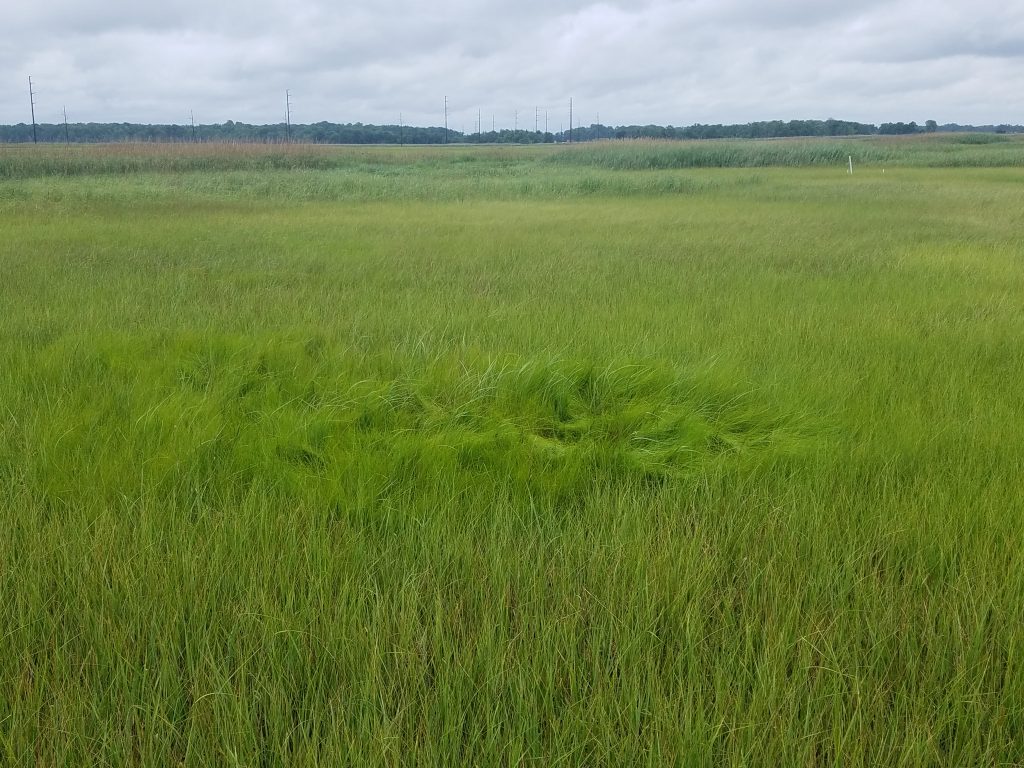
Facebook Twitter Instagram YouTube RSS Feed
Written on: December 11th, 2019 in Outreach
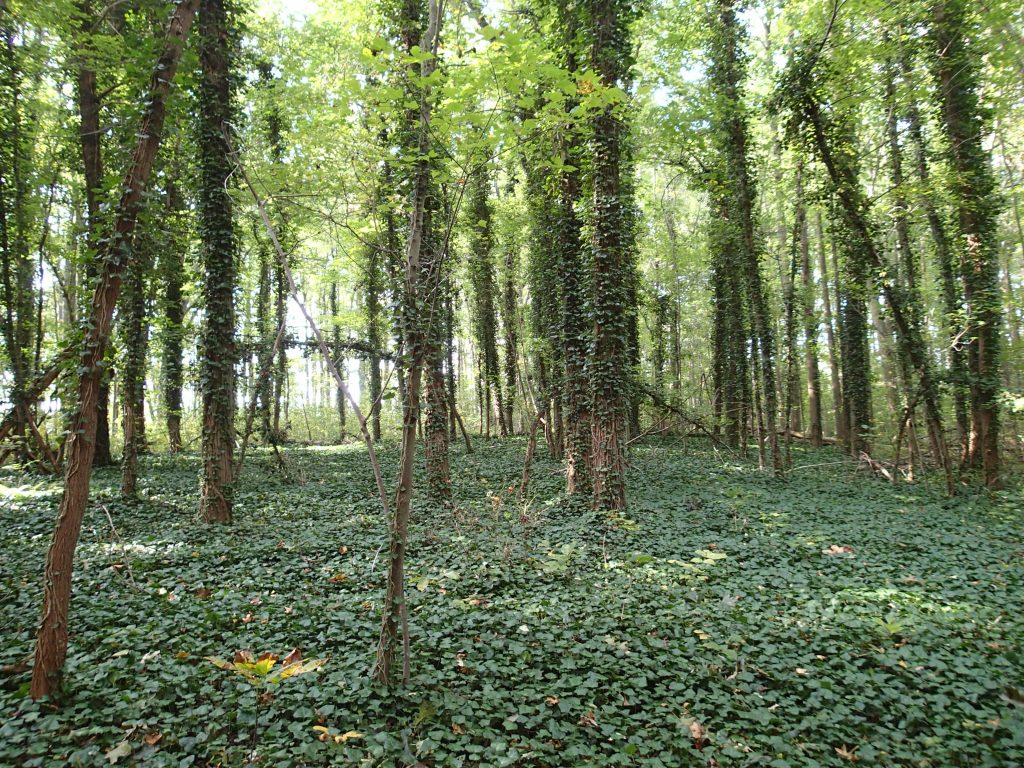
Every year we attend lots of public events and we meet so many great landowners who have wetlands on their property and want to know more. One of the most common questions we field is “What can I do to improve the health of wetlands in my yard”?
You don’t have to own 20 acres of flooded fields to make a difference! There are many common wetland stressors that are not an easy fix, such as ditching and channel straightening but addressing invasive plants is a great place to start.
The first step is to figure out what’s a good plant and what’s bad. If you aren’t a botanist that’s ok- we can help you figure out what’s what! We created a handy dandy Delaware Wetland Plant Field Guide that is designed to help landowners identify native versus non-native or invasive wetland plants. It’s full of color pictures and easy to read. Follow the symbols that note which species are invasive.
Another great resource is a booklet put out by the Natural Resources Conservation Service called Mistaken Identity?. It addresses invasive wetland and upland species by type (e.g. tree, shrub, vine, grass) and common native lookalikes. Even though it’s winter now and many plants have died back or lost their leaves and flowers, you can still easily see some of the common invaders.
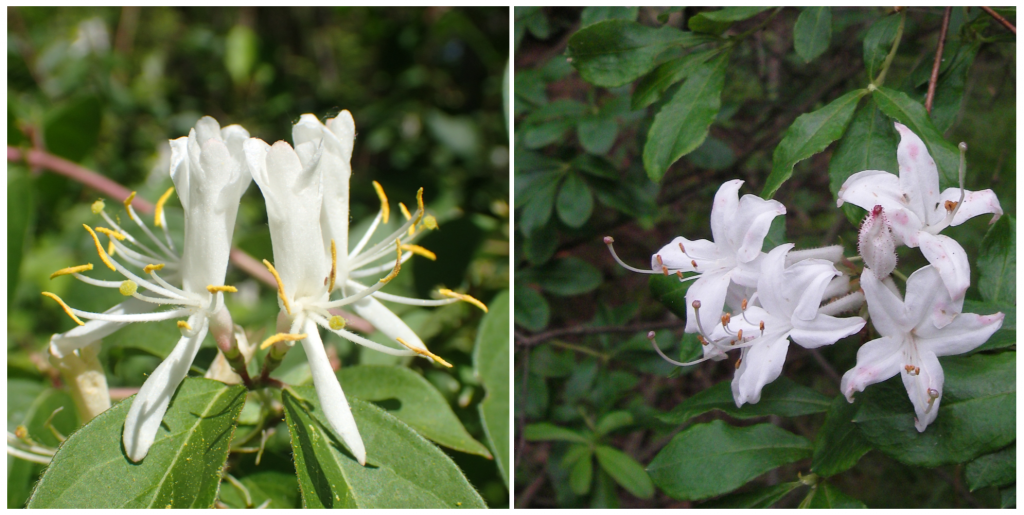
Step two is get rid of the unwanted. Wait until the humidity and bugs have died back if you need to. Many common invasive plants in Delaware such as Japanese honeysuckle, Phragmites, English ivy, and multiflora rose persist right through the winter so you can pick a cool fall day to tear them out.
Mistaken Identity? also has a great section on different means to control invasive plants such as using herbicides, cutting, hand pulling and girdling.
Different species respond better to different techniques so be sure to read the pages that specify which method is best. For example, Japanese honeysuckle can simply be pulled out by hand or by digging, but bamboo needs to be cut mechanically and sprayed chemically to be effective.

Step three is to replace! Now that those nasty invasive plants are gone you can fill in with native options that are better suited for Delaware’s growing season (i.e. are suited for our temperatures and precipitation), won’t take over and invade your yard, and are better food sources for wildlife and pollinators.
There are a growing number of native plant sales every spring and fall where you can easily find species that fit your amount of shade, soil conditions and preference for flowers or fruit.
Can’t wait for one of the sales? Visit your local nursery and ask for natives only. Several local nurseries focus on natives only such as the Inland Bays Garden Center in Frankford, DE or for those up north Octoraro is just over the line in Kirkwood, PA.
Still craving more information? Tune into or join the Delaware Native Plant Society or the Delaware Invasive Species Council. They host talks, workshops and events, offer advice and look for volunteers to help with long-term plant demonstrations. Go native!
Written on: December 10th, 2019 in Wetland Restorations
Guest Writer: Clare Sevcik, DNREC Nonpoint Source Program
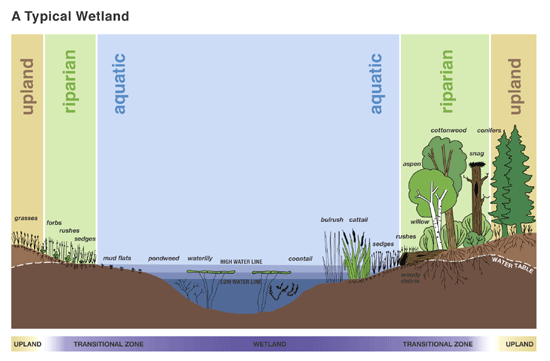
Riparian buffers are planted areas specifically next to waterways, such as streams, ponds, wetlands, and rivers. These areas are extremely important to keeping our waters healthy. They do so by filtering and trapping nutrients and sediment out of waters before they enter our local waterways.
Different types of plants can be found in buffers, ranging from grasses to mature trees. The type of plants present in the buffer has an effect on how it may function.
Usually, riparian buffers are classified into two types, grass or forest. As the name suggests, grass buffers are dominated by grasses. Grasses are tremendously effective in slowing down the flow of water, but are still not as efficient as our next buffer type in improving water quality and quantity.
Forest buffers are dominated by larger plants, such as shrubs and trees. Planted forested buffers are usually made up of a variety of species that will grow to different heights to recreate a natural forest. These plants are bigger, therefore hold onto more water and have more water processing ability. One thing to note is that the type and placement of each tree requires a lot of forethought and planning to make sure the buffer is successful.
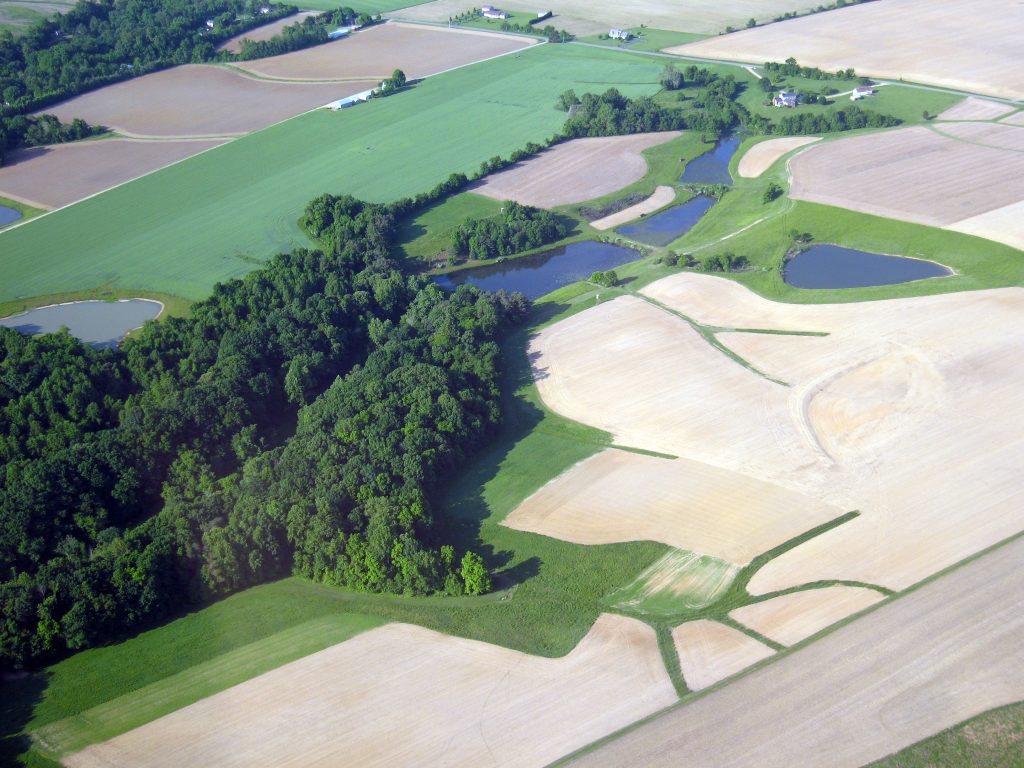
Buffers serve a number of important roles in the ecosystem. First, they are a waterway’s first defense against runoff. As rainwater flows across the land, it picks up various pollutants. Buffers help by slowing down this water, giving plants a chance to remove pollutants, such as sediment and nutrients, and allowing the water to seep into the ground. Excess nutrients in waterways can be a huge issue because it can cause algae to bloom and wreak havoc on the water quality in a process called eutrophication.
In a heavy rain event, unprotected and unsecured banks can erode due to flooding and runoff. Both types of vegetated buffers help maintain shorelines by stabilizing the banks and holding together the sediment. Forest buffers especially boast large root systems that can hold sediment extremely well once the plants are established. These root systems are able to hold onto the sediment and prevent the flooding from carrying it further downstream.
Lastly, forest buffers are also important to support local wildlife and a healthy ecosystem. Most waterways benefit from shade from established trees with a good sized canopy along the bank. This shade helps to regulate the water temperature, preventing the water from warming excessively, as warmer waters may encourage large algal blooms and cause unnecessary stress for fish and other aquatic organisms. The root systems from these trees can also provide nursery habitat and shelter for animals.
Riparian forest buffers provide more benefits and protection for waterways than grass buffers, so many states are looking to implement these as best management practices (BMPs) to improve water quality. For example, about a third of Delaware is located in the Chesapeake Bay Watershed. Therefore, Delawareans in that 1/3 of the state have an impact on the Chesapeake Bay. Installing riparian buffers in these areas can help Delaware meet its goals for reducing pollution to the Bay, which is a beautiful and vital resource in the Mid-Atlantic region.
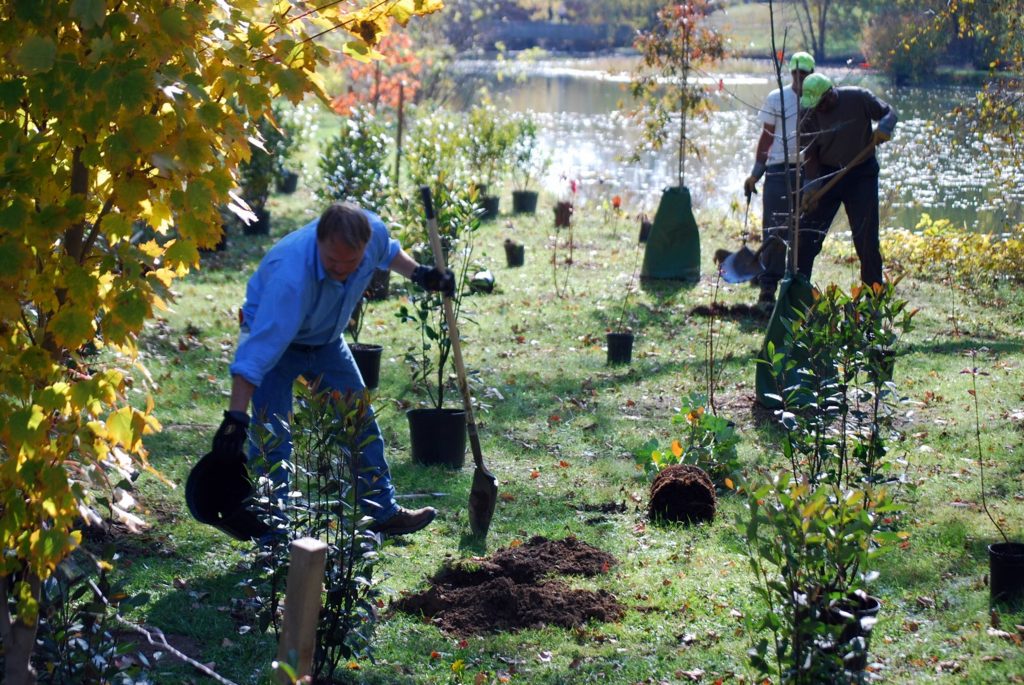
Delaware is among six Chesapeake Bay Watershed states – along with Maryland, Virginia, West Virginia, Pennsylvania, and New York – and the District of Columbia committed to a federal-state initiative to develop a pollution “diet” that will help restore the water quality of the Chesapeake Bay and its tidal waters by 2025.
All of these states are working to improve the Bay’s waters by implementing projects, or Best Management Practices (BMPs), throughout the watershed. Delaware’s most recent, and final, strategy for implementing BMPs can be found in Delaware’s Chesapeake Bay Phase III Watershed Implementation Plan (WIP). In addition to implementing BMPs, Delaware has committed to a wide array of goals and outcomes that were outlined in the 2014 Chesapeake Bay Watershed Agreement.
Because Delaware signed onto the 2014 Chesapeake Bay Watershed Agreement, the State has been specifically designated federal funding to help meet Chesapeake Bay goals. These funds are categorized into two grants, the Chesapeake Bay Implementation Grant (CBIG) and the Chesapeake Bay Regulatory and Accountability Program (CBRAP).
The CBIG focuses on funding projects consistent with the 2014 Chesapeake Bay Watershed Agreement goals and outcomes: sustainable fisheries, vital habitats, water quality, toxic contaminants, healthy watersheds, stewardship, land conservation, public access, environmental literacy, and climate resiliency. This grant is awarded based on Request for Proposal submissions to DNREC’s Nonpoint Source Program.
The CBRAP grant focuses on implementing and expanding their jurisdictions’ regulatory, accountability, assessment, compliance, and enforcement capabilities in support of reducing nitrogen, phosphorus, and sediment loads delivered to the Bay to meet the Water Quality Goal of the 2014 Chesapeake Bay Watershed Agreement and the Bay TMDL.
Different federal funding sources are also available to cost-share other BMPs. In particular, the Conservation Reserve Enhancement Program (CREP) focuses on the agricultural sector, and offers incentive payments to landowners in the Chesapeake Bay Watershed portion of Delaware to implement BMPs. There is a particular focus on creating new or improving existing forested buffers on their properties.
If you are interested in learning more about buffers and the grant programs please contact Brittany.Sturgis@delaware.gov (CBIG), Sara.Wozniak@delaware.gov (CBRAP), or Patti.Webb@delaware.gov (CREP).
Written on: December 5th, 2019 in Outreach
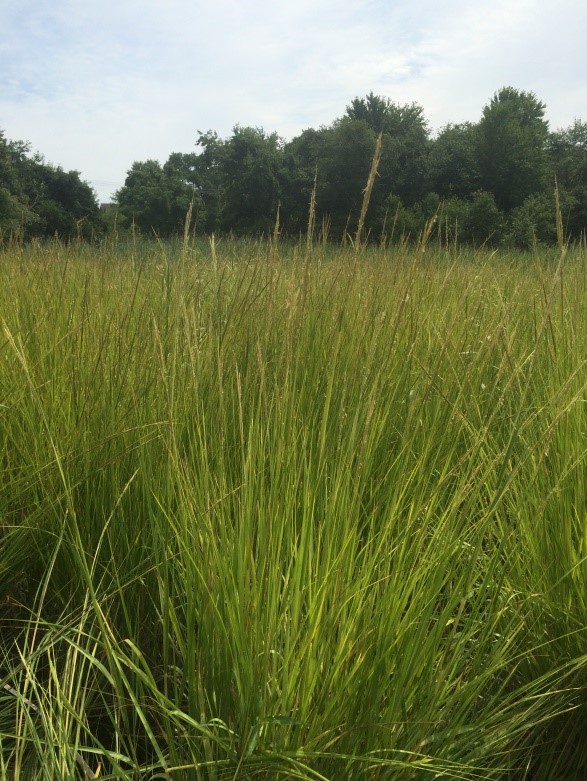
When we think of Delaware’s coastlines, nothing comes to mind quite like the beautiful, expansive marshes full of saltmarsh cordgrass blowing in the gentle sea breeze. Our team has become especially well-acquainted with this grass, known by most as Spartina alterniflora, as we have visited hundreds of tidal wetland sites over the years.
Much to our surprise, Spartina alterniflora was recently renamed as Sporobolus alterniflorus. Previously, Spartina and Sporobolus were 2 of 6 separate genera within a larger group called Sporobolinae. Those classifications were largely based on visible features of plants, where species were grouped together based on shared physical, or morphological, traits.
However, more recent studies increasingly use advanced technology to classify groups based on DNA sequences. Such molecular studies can clarify, and sometimes refute, older proposed classifications. This was the case for Peterson et al., who published their research in 2014 in the journal TAXON. Their study showed that Spartina and Sporobolus are not 2 separate genera, but rather, that plants in the Spartina group actually belong within the Sporobolus genus.
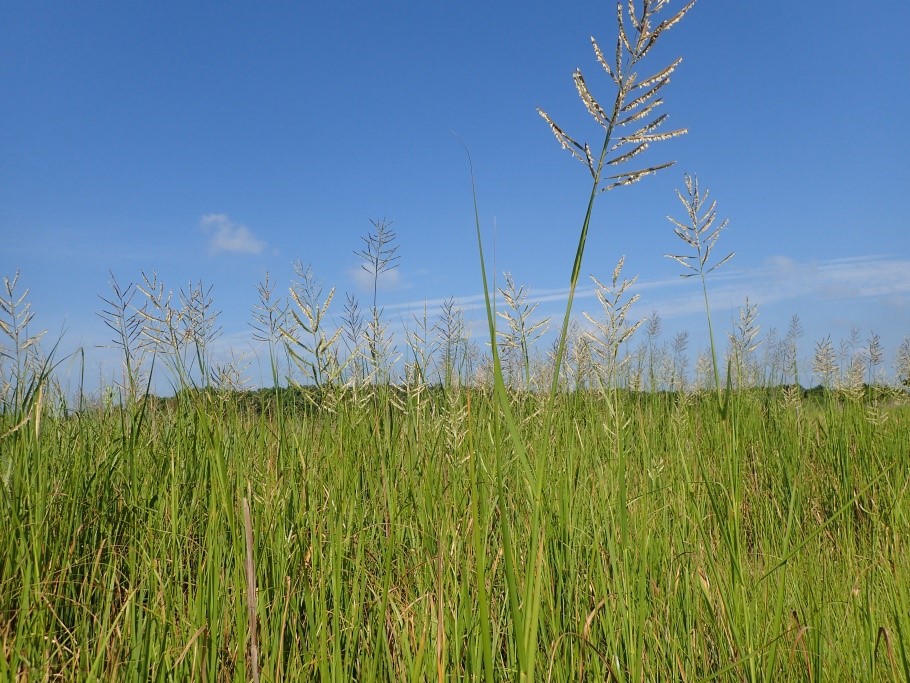
It is not just our beloved Spartina alterniflora that has gotten a name change, though; all species that were before placed in the genus Spartina have now been reclassified to the genus Sporobolus. This means that saltmeadow cordgrass, one of our beautiful high marsh plants and previously known as Spartina patens, is now called Sporobolus pumilus. Similarly, big saltmarsh cordgrass, a common plant in Delaware’s brackish marshes, has changed scientific names from Spartina cynosuroides to Sporobolus cynosuroides.
Surprisingly, these name changes are not as new as they may seem. Some other molecular studies as early as 2001 actually suggested that Spartina was within Sporobolus as well. However, those earlier studies did not have nearly as many plant samples as Peterson et al. did, making the results found by Peterson et al. more defensible.
So, within the past few years, the new names for Spartina plants have slowly begun to take hold. It’s time to become reacquainted with our tidal marsh inhabitants!
Sources: Peterson, P. M., Romaschenko, K., Arrieta, Y. H., and J. M. Saarela. 2014. A molecular phylogeny and new subgeneric classification of Sporobolus (Poaceae: Chloridoideae: Sporobolinae). TAXON, 63: 1212-1243.
